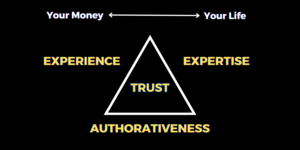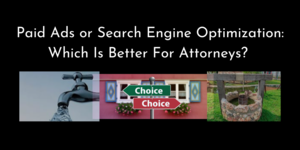Editor’s Note: This blog post was originally published on July 12th, 2020.
Sending an email newsletter has become a mainstay for companies, blogs, and influencers to attract and engage an audience. Even as new platforms like text messaging and social media have arisen, email still serves as an important vehicle to communicate brand messages, news updates, and other information to parties who have expressed interest.

Getting On An Email List
Almost everyone is on some email list or email newsletter; most are on a bunch! However, gone are the days where marketers and list builders scraped email addresses in bulk and added recipients without regard for whether the target wanted to be included. Much like cold-calling in our current “No-call List” environment, lists today are made up of subscribers. It is expected that they have chosen to receive the information.
Usually, someone becomes a subscriber as a result of one of a few actions:
- A follow-up request for information (from a website, sales call, etc)
- In exchange for an opt-in arrangement
- The recipient gives permission
With the rise of virtual meetings, learning to facilitate them more effectively is more important than ever. Check out this post for hints on making yours better!
Starting An Email Newsletter
Those who have never had an email list or have never sent an email newsletter might see this as a daunting task. Everything looks difficult (even impossible) when you have never done it!
Bryan Harris at GrowthTools.com recently sent an email to his group offering hints and ideas for how someone could start an email newsletter with a small list (or no list). The email included a link to one of his past blog posts with an assortment of ideas.
Having never built an email list before, I decided to try his Ambassador technique.
My Experiment
I started my experiment with Bryan’s Ambassador technique using my Twitter account (@SwamiDaveSays).
Here are the specifics of my account (as of the experiment):
- Joined Dec 2009
- Followers (396)
- >17K Tweets with activity across assorted interests and topics
For the experiment, I planned to do the following:
- For starters, I sent a DM (direct message) every one of my Twitter followers asking them if they’d join the list.
- I used one of Bryan’s template scripts for every message to my followers (Hey [name], I’m starting an email newsletter on [topic]. I thought you might be interested. Want in?).
- For individuals who I personally knew, I appended a personalized connect point into the template message referencing people we both knew or interests we both shared. The template was the same, but the personalization highlighted that my request was unique and not coming from some automated message bot or tool.
- For individuals who I do not know their actual name, I left it off.
- For those who said Yes, I asked for their best email.
- Everyone who responded (including those who said No) got a personal response from me thanking them.
Editor’s Note:
This experiment was a complete “Right-Hook” maneuver! It was a completely one-sided ask as there was no mention of opt-in or any reward/exchange they were getting for signing up.
My only “Jabs” were the ~17,000 tweets that I have sent in the past.
(If you aren’t familiar with Gary Vaynerchuk’s Jabs & Right Hooks metaphor, you read more about it here via this link.)
Interested in making YouTube videos? Check out this post series sharing how we create ours!
What Were The Results?
After 48 hours, here were the results:
- The active subscriber count is 16.
- 3 others said ‘Yes’, but I still need their email addresses.
- 4 said ‘No’.
- 23 out of 396 (~5%) answered. I thought that was a pretty good response for a direct ask!

Of those who said Yes, about 65% of them were people with whom I share a personal relationship. For those with whom I do not have a personal relationship, they and I share an interest in the newsletter vision/objective.
Based on just these results, Bryan’s “Ambassador” technique worked in exactly the fashion that I expected it!
It was a technique targeted for:
(Someone with…) a brand-new email list and not many resources like existing traffic, existing subscribers, etc.
Bryan Harris, GrowthTools.com
Editor’s Note:
The blog noted that people who practice this technique can build a list to upwards of 200 subscribers in a very short timeframe (ex. 1 week). While I did not achieve that level of success, I also did not exercise this attempt across what Bryan calls the “4F List”:
- Followers
- Former Customers
- Future Customers
- Family & Friends
Interestingly, one of the Yes responses suggested a Guest Posting/Guest Emailing arrangement as a cross-promotional exercise.
Technique #2 & #3 in the blog post are related directly to “Guesting”; acting as both Host and Guest to pollinate traffic across both groups.
Next Steps
This exercise was a success! For someone looking to build an email list or start an email newsletter, this is a great way to start.
For my part, I am repeating the technique across my other social platforms. Each of the different platforms has a different mix of relationship versus interest as the connection point. As my newsletter is going to be more interest-based, I expect that responses will vary as well.
Since one subscriber has already suggested a Guest Post/Guest Email exchange, I will be running an experiment with that technique as well.
Be sure to check back as I will update this post with additional results as it progresses. Your best way to do that (if you are not already subscribed to my email list) is to sign up below!


